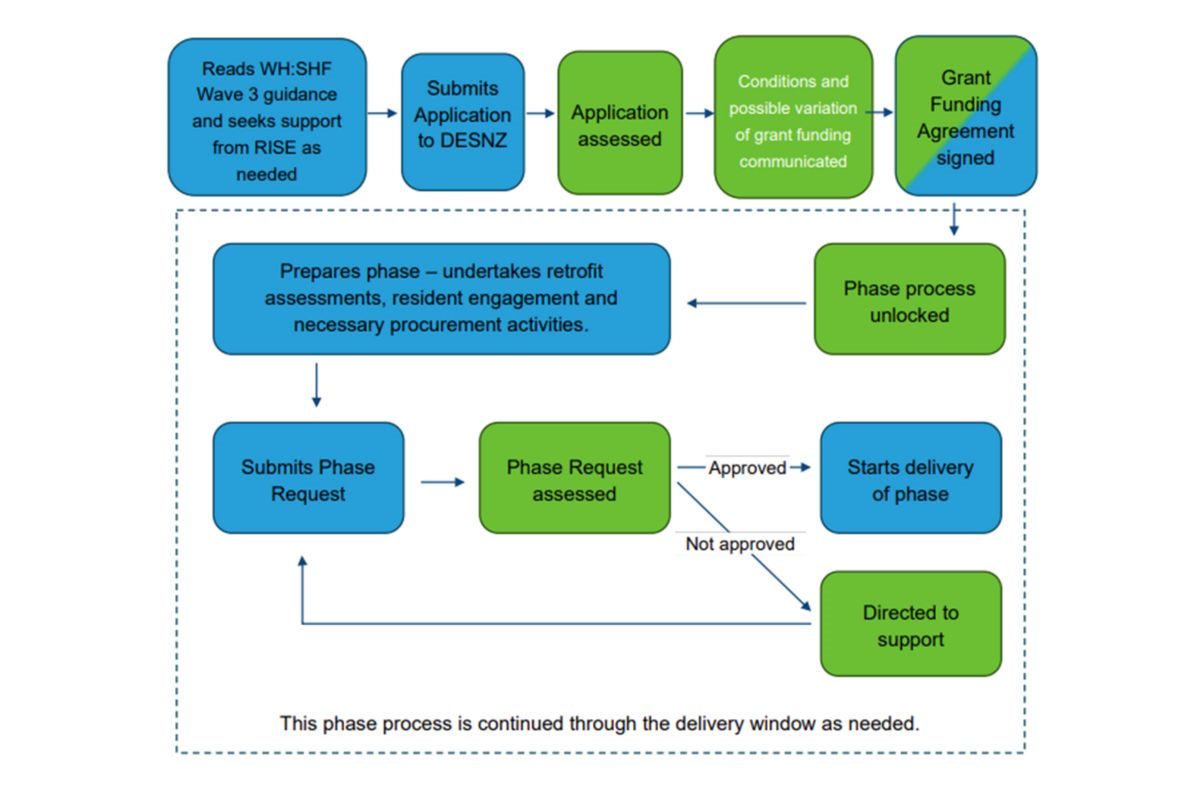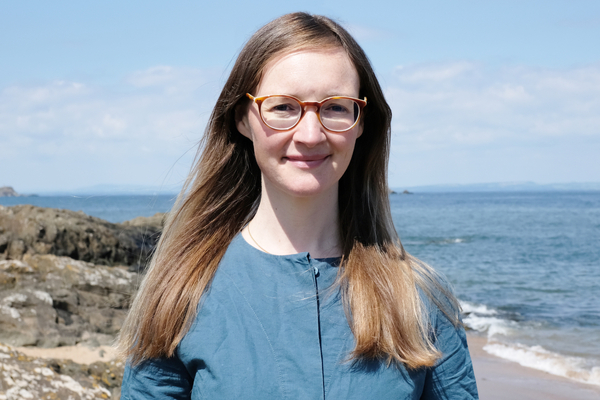WARM HOMES: SOCIAL HOUSING FUND WAVE 3 – A GUIDE TO BIDDING: Baily Garner LLP
Funding timeline.
- Application window closes: Midday on 25th November 2024
- Successful projects notified: Early 2025
- Deadline for all grant funding to be transferred to Grant Receipts and spent: 31st March 2028
- Delivery window ends: 30th September 2028
The application timescales align closely when compared to previous waves of funding, with applications made towards the end of November and successful applicants being notified in early 2025.
Funding available.
The draft competition guidance included £1.2 billion of available funding allocated by the previous government. This has been removed from the published guidance, which is expected to be announced as part of the Autumn Statement.
Delivery timescales.
The delivery window will run to September 2028, with a third of the total grant funding spent during each financial year. Grant claims can be drawn from 1st April 2025 and all must be spent by March 2028. The guidance clearly states bidders must be comfortable and able to deliver within the delivery timescales. For the previous funding waves, delays have often led to organisations negotiating extensions to the delivery window. But from the guidance released, this will not be an option for Wave 3.
Eligible applicants.
Local Authorities, Combined Authorities, Registered Providers of social housing and Registered Charities that own social housing can apply for funding directly, or as part of a consortium, under Wave 3 of the WH:SHF, to support the installation of energy performance measures in social homes in England. Greater Manchester Combined Authority (GMCA) and West Midlands Combined Authority (WMCA) will be receiving an allocation of funding. This means that their constituent local authorities, housing associations, etc, will not be permitted to apply for SHF schemes.
Eligible properties and home types.
Homes are eligible if they are defined as ‘social housing’ under the Housing and Regeneration Act 2008. Homes that were retrofitted under Wave 2 SHDF funding streams will not be eligible for inclusion. However, homes that were retrofitted under the Demonstrator or Wave 1 SHDF funding streams are eligible for low carbon heating measures. This will be advantageous for many organisations who benefitted from these schemes by upgrading fabric and achieving low-carbon-ready homes. Mixed-tenure blocks and terraces can also be treated, provided at least 30% are social homes, a significant change from the 50% mandated by Wave 2 funding. Eligible measures for these properties are limited to insulation, ventilation and communal low carbon heating. A maximum of 30% of the non-social homes can be included in the overall application.
- Non-social homes within an application – 30% limit
- Non-social homes within a block/terrace – 70% limit
- Homes at or above EPC band C within an application – 10% limit
Non-social homes can also access the cost caps in the same way as social homes and the owner occupiers are not expected to contribute to the cost of the measures.
Eligible measures.
Eligible measures are any energy efficiency and heating measures compatible with the latest version of the Standard Assessment Procedure (SAP) that will help improve the energy performance of homes, excluding heating systems solely powered by fossil fuels.
Targets and measures.
The post-works target remains the same, with the goal to achieve EPC C. For particularly poorly performing properties (EPC E – G), there is an acknowledgement that reaching an EPC of C may be unachievable within the cost caps. There is no expectation to meet a certain EPC grade, but properties should attain the maximum EPC grade within the cost cap. The space heating demand target (kWh/ m2/yr) that has been included in the previous waves of funding has been removed. The guidance also states that organisations are not encouraged to go beyond EPC C – a clear sign that the ambition is to improve as many homes as possible, rather than fewer homes to higher standards. This is the longest delivery window we have seen and with the Climate Change Committee’s recommendations in February 2023, talks around EPC reform are underway. The guidance acknowledges this and notes there will be transitional arrangements put in place – something bidders will want to keep an eye on.
Minimum number of homes.
Challenge Fund Applicants – there must be a minimum of 100 eligible homes included within the application. There is acknowledgement from the guidance that there may be smaller landlords who own or manage fewer than 100 properties. These organisations are recommended by the guidance to join a consortium. Strategic Partnership Applicants – the guidance states that projects need to show ambition and delivery at scale, with reference made to properties in the thousands.
Application routes.
The funding is available through two streams: the Challenge Fund and the Strategic Partnership route.
Strategic partnership.
The key underlying principles behind the Strategic Partnership route are an ambition to deliver retrofit at scale and representation of value for money. The organisations that apply through this fund need to have a proven track record of delivery at scale and should be able to evidence this with properties numbering in the thousands. This route provides greater autonomy in project delivery, with less monitoring and reporting requirements.
Challenge fund.
One of the key principles of the Challenge Fund is that all compliant applications meeting the minimum requirements will be awarded funding. One thing to bear in mind is that if the scheme is oversubscribed, the awarded funding may not match what was requested.
Delivery process – Challenge fund.
The guidance includes the process for drawdown of the funding, which is illustrated in the below flowchart.
Both routes.
It is possible for separate applications to be made for both funding routes, provided they are for different homes.
Consortium.
It is possible for organisations to join a ‘consortium’, meaning multiple organisations can submit under one application. There is an expectation that one of the applicants will take on the role of ‘Lead Applicant’ and assume a greater amount of responsibility. For example, they are responsible for undertaking due diligence checks on the other members and ensuring all of them deliver, with a contingency plan in place to deliver works to homes if one were to drop out. The guidance goes into greater detail, with useful information on these expectations, but the key takeaway is that there is a lot of responsibility on this ‘Lead Applicant’.
Cost caps.
Previously, funding regimes varied depending on EPC band and wall types, however, there is a new cost cap regime which sets Wave 3 apart from the previous waves. £7,500 of matched grant funding is available per home, which is averaged across the homes in the application (this can even be across different consortium members). This means £7,500 will be contributed by DESNZ, with the landlord contributing the other £7,500. It also means one property could benefit from £500 of funding, enabling another to benefit from £14,500. Clearly, this provides a great opportunity for organisations who have a detailed understanding of their stock, as they can apportion the funding appropriately and maximise the benefits.
There is an additional £7,500 of grant funding available for those properties that install low carbon heating measures in homes that are off the gas grid – this is WARM HOMES: SOCIAL HOUSING FUND WAVE 3 – A GUIDE TO BIDDING called “off gas grid low carbon heating cost cap uplift”
- Base cost cap: maximum grant funding £7.5k / minimum co-funding requirement £7.5k / total per home £20k
- Off gas grid low carbon heating cost cap uplift: maximum grant funding an additional £7.5k on top of base cost cap / minimum co-funding requirement an additional £7.5k on top of co-funding / total per home an additional £15k on top of total spend
- On gas grid low carbon heating incentive offer (up to 10% of homes in the application): maximum grant funding of £20k (can’t be used in addition to the base £7.5k cost cap) / minimum co-funding requirement is £0 / total per home is £20k
Claims of grant funding.
As part of the application process, the applicant will set out how much grant funding will be spent during each financial year of the project, which will form the project baseline. As above, there is an expectation that the applicant delivers against their baseline. Any underspend is not able to be transferred to future financial years. There is an expectation that funding will be split equally over the three years, but recognition that spending may fluctuate and applicants will be assessed on a case-by case basis.
- FY25/25: 1/3 of grant funding
- FY26/27: 1/3 of grant funding
- FY27/28: 1/3 of grant funding
Interaction with other funding schemes.
The guidance states that other energy efficiency government funding schemes can be used in tandem with Wave 3 projects. However, this cannot count towards, and must be separate to, the 50% co-funding requirement. This can be a complex process, and applicants must ensure that blended projects comply with funding requirements of each respective scheme. An individual measure cannot be funded by multiple schemes.
Low carbon heating on the gas grid.
There is a new, optional incentive for homes on the gas grid – and it’s significant. Up to 10% of the homes included within the application can gain access to £20,000 of unmatched funding (meaning co-funding is not required) to install low carbon heating measures. Homes accessing this cost cap cannot access the base cost cap. Eligible low carbon heating measures are air source heat pumps, ground source heat pumps, shared ground loops and heat networks. It is important to note that PV can be included where this forms part of a low carbon heating installation. Organisations have a clear opportunity to benefit from this funding, particularly where fabric has already been improved. The funding also enables properties which have already reached EPC C or above to be included, up to the cap of 10%. It is important to note that following installation of low-carbon heating, occupants’ bills must not increase as a result of the retrofit works.
Retrofit Information, Support and Expertise (RISE).
There is a service ran by the Department for Energy Security and Net Zero (DESNZ) provided to all prospective applicants at no cost. This Social Housing Retrofit Accelerator (SHRA) was a fantastic opportunity for bidders and dramatically increased their success rates – as was made clear during the SHDF Wave 3 launch presentations. Baily Garner have historically worked alongside DESNZ and Turner & Townsend to provide advice to those bidding for funding through SHRA. For Wave 3, SHRA will be replaced by Retrofit Information Support and Expertise (RISE). We will be continuing our work with DESNZ and Turner & Townsend under RISE to provide Technical Masterclasses, Roundtables, Podcasts, Advice packs, Online Courses and Face-2-Face Bootcamps to assist bidders as they navigate WH:SHF Wave 3. Applicants are also able to invite external consultants and contractors to RISE sessions, particularly where they may be providing support in the bid process.
Baily Garner Retrofit Services.
As well as playing a critical advisory role to assist with bids for funding, we are providing retrofit expertise on some of the largest SHDF schemes in the country. In addition to working with large organisations on bids involving 1000s of homes, we have delivered smaller projects with specialist needs, such as difficult to treat, non-traditional construction and conservation area projects. We are experienced – due to our work on SHDF Demonstrator, Wave 1, Wave 2.1 and Wave 2.2 projects – in embedding good monitoring and reporting practices, both of which are required for Challenge Fund and Strategic Partnership bid approval.
Ben Lambon-Ralph and Ben Nixon are Associate partners at Baily Garner LLP






